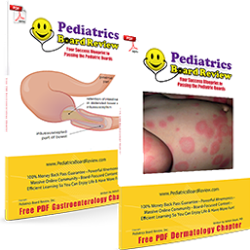What To Expect From the Pediatrics Board Exam
The pediatrics board exam is an essential component of your career in pediatrics, but, as with any standardized test, there’s more to the board exam than simply memorizing answers to thousands of questions. Successfully passing the exam comes from having a solid command of medical knowledge and test-taking strategies. This includes knowing what to expect on the day of the exam and doing everything possible to have a methodical approach to the big day.
So, here are some things that you can expect from Pediatrics Board Review (PBR) to help you prepare for your initial certification exam. For information on the ABP Maintenance of Certification (MOC) exam and MOCA-Peds, please visit our recertification page.
Risk Calculator Quiz
While the American Board of Pediatrics provides the ABP General Knowledge Self-Assessment, do not assume your results will act as a true indication of your ability to pass the initial certification exam. This assessment is more appropriate for the ABP Maintenance of Certification (MOC) exam, not the initial certification exam.
PBR’s free, online Risk Calculator Quiz will help you understand your risk profile of possibly failing the pediatric board exam and will place you as either low, moderate, or high risk.
Knowing your risk profile for the initial certification exam will give you a plan for how to move forward with your pediatrics exam. For example, pediatricians in the low-risk group will use the 300-hour study plan in the PBR Efficiency Blueprint, while those in the moderate-to-high risk groups will use the 500-hour study plan. Your plan will not only differ in how many hours you need to set aside for studying, but also how many times you'll review the material and whether improving your test-taking strategies should be a key point of focus.
In fact, we believe so strongly in the PBR Board Certification System that we offer a 100% Money Back First-Time Pass Guarantee.
For all of the risk categories, we have provided structure and guidance that will help you get to your goal of passing your pediatrics board exam. We help you with time management, community support, and we have a proven track record of success.
Did you know that PBR has helped pediatricians pass after as many as seven failed attempts? We even helped one pediatrician pass on his tenth attempt!
We can help you too.

What Should You Expect from the Pediatrics Board Exam?
- If you've never taken the exam before, you can go through a short tutorial before the exam begins. PBR members are trained to go through the ABP tutorial BEFORE the exam day. Keep in mind that this tutorial is technically for the ABP MOC exam. Initial certification exam test-takers SHOULD go through it because it’s almost the exact same tutorial seen on their exam day. The slight difference will be around the number of blocks that the tutorial mentions for the exam (the initial certification exam has four blocks rather than the two mentioned in this tutorial). Going through this tutorial before your exam can remove one point of stress at the beginning of a very important day.
- According to the American Board of Pediatrics, you must arrive for your pediatrics board exam at least 30 minutes before your scheduled test time. If you arrive late, the test proctor may actually bar you from entering to take the exam, meaning that you'll have to pay a rescheduling fee and take the exam the following year.
- When you arrive at the testing center to take your pediatrics initial certification exam or maintenance of certification exam, you'll initially be scanned for prohibited electronic devices and will need to show a valid ID to be admitted into the testing center. You'll be given a secure storage locker to stow away your personal belongings and effects. You'll also have to turn your pockets inside out to ensure that you're not carrying prohibited items, and you’ll be asked to roll up your sleeves to show that you're not wearing a wristwatch. After that, you'll be given two laminated note boards and two markers. Immediately before you enter the exam room, you'll be asked to sign your name and document the time.
- After you've signed in for the exam, someone will escort you to a workstation where the exam will take place. You will be allowed to take in your photo ID, your storage locker key, earplugs, the two laminated note boards, and two markers. If you would also like to take something else into the room, you can check the Prometric pre-approved items list.
- During the ABP initial certification exam, you will have four examination sections and 1 hour and 45 minutes to complete each section. PBR offers more in-depth advice on how to manage your time during your ABP exam.
- You'll be monitored at all times while you're in the facility, and all testing sessions will have audio and video recorded. Testing advisors will also periodically walk through the exam room to monitor for any irregular behavior.
- If you need any assistance, you can raise your hand for help. If you encounter a hardware or software problem while taking your exam, it's important to leave the message on your screen so that an exam official can determine the source of the error. You shouldn’t lose any testing time and your score shouldn't be affected because of any technical problems, but must communicate any such problems to a testing official as soon as possible.
If This Sounds Daunting, We Can Help!
So much of passing your boards comes down to not only your knowledge of medicine, but to your ability to take standardized tests under the very artificial environment mentioned above. This includes the development of your test-taking strategy, and it also includes understanding the many ways to optimize your test-week schedule, your test-day schedule, and yourself. PBR helps in all these areas with a team-based approach led by Dr. Ashish Goyal. Dr. Goyal is PBR’s author and he has coached members to success after as many as nine failed attempts.
Want to skyrocket your scores and get the greatest bang for your buck? We recommend:
PBR’s No Brainer Bundle
Increase your chances of board success to 95% with ALL of our pediatric knowledge base resources. You will get access to our hardcopy books, online editions of the books, audio course, video course, access to live ASK THE EXPERT webinars, a digital picture atlas, our Full Online Test-Taking Strategies Course, and even three 90-Day Personalized Study Schedules created just for you by Team PBR. The No Brainer is the BEST way to leverage your study time for maximum results.
What Else Can I Do?
One of the fastest ways to improve your chances of passing the pediatric boards is to develop your test-taking strategy. This isn’t a skill that everyone has, but Dr. Goyal can help you develop it.
Dr. Goyal will teach you how many questions are in each section and what kinds of questions to expect. He has also identified three major categories of questions that every ABP question will fall into, and he’s created algorithms to help you process each category of questions. He’s also discovered shortcuts to help get questions correct by identifying answer choices that are similar, opposite, contain “hard stop” words, contain “hedging” words, and those that are meant to leave you wondering why it feels like there are multiple correct answer choices.
You will learn all of this through PBR’s test-taking strategy courses. These courses have repeatedly been the key to success for professionals taking medical board exams, and they’ll help you too.
So, if you would like help preparing for your pediatrics board exam, look to the leader in this field here at Pediatrics Board Review (PBR). From helping you build your fund of knowledge the right way, to helping you with all the ins and outs of your exam day, we can help you pass your exam the very first time or your money back — guaranteed!
Become a “No Brainer” Bundle Member Today!
FREE STRATEGIES




